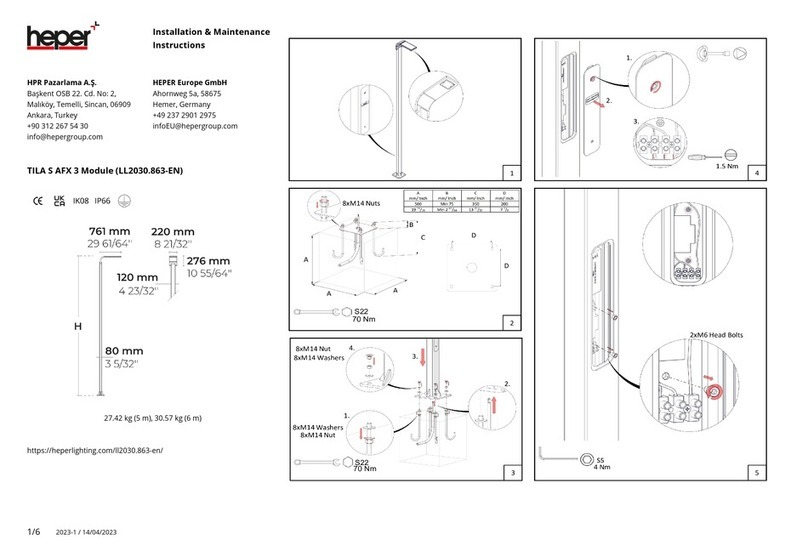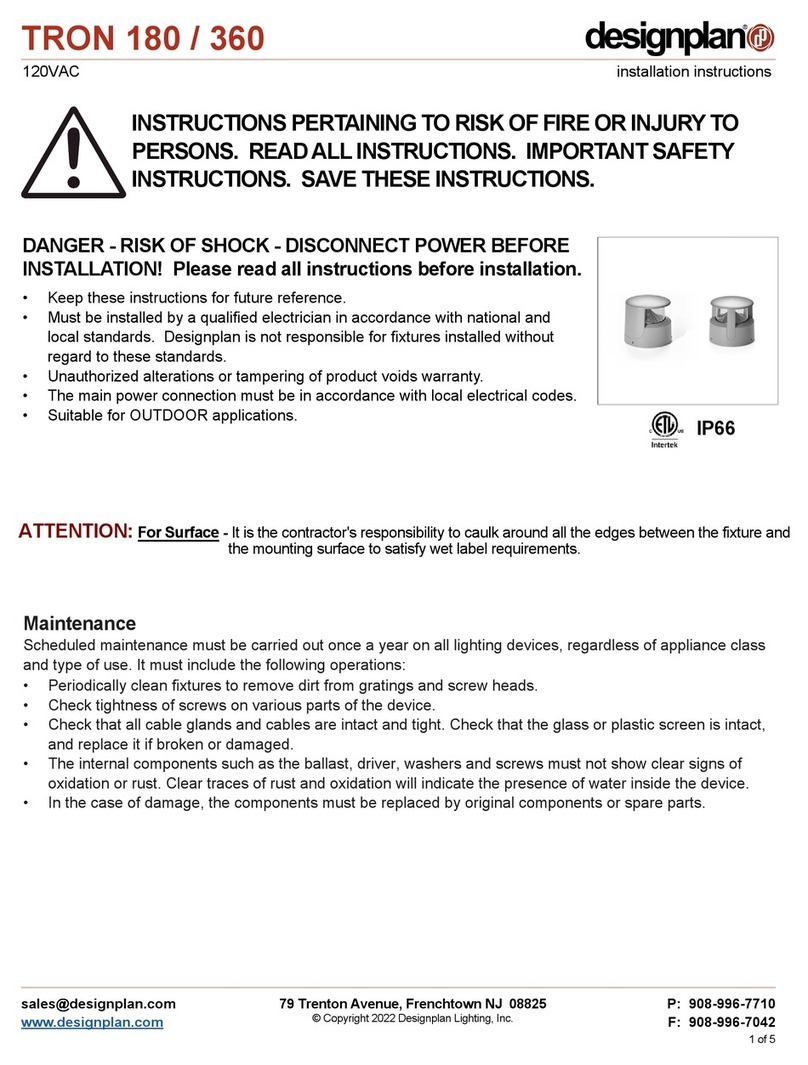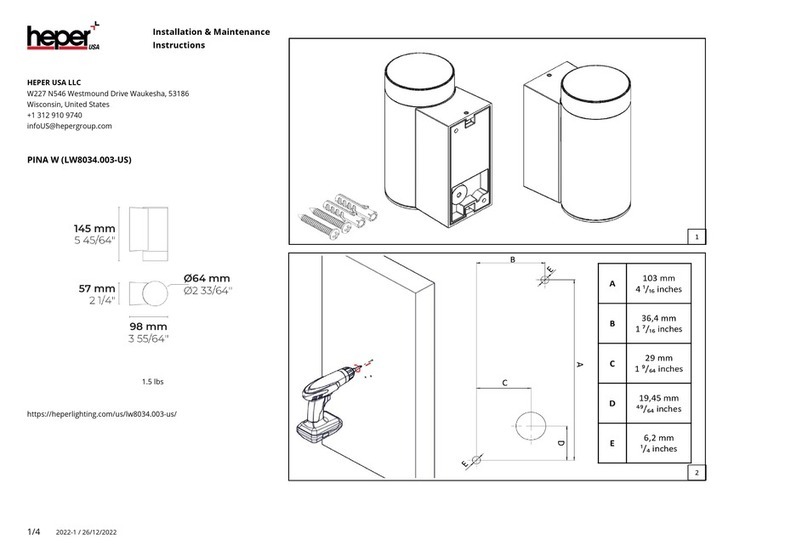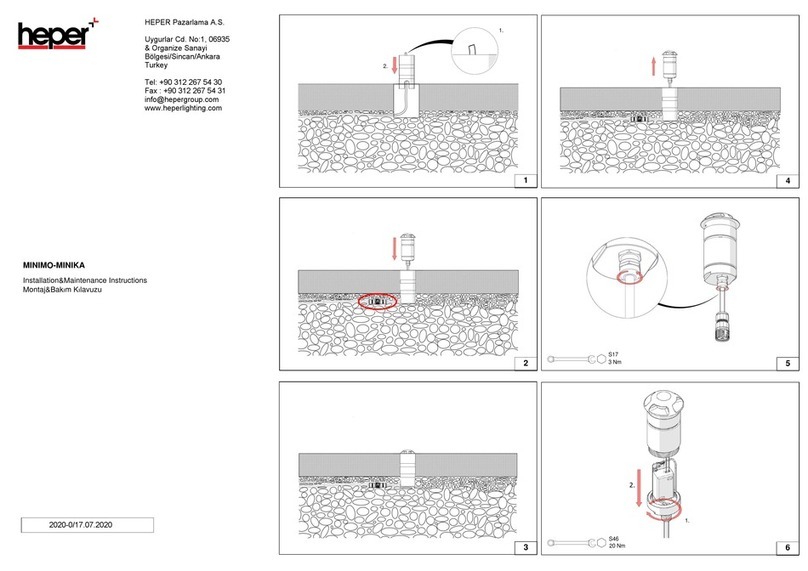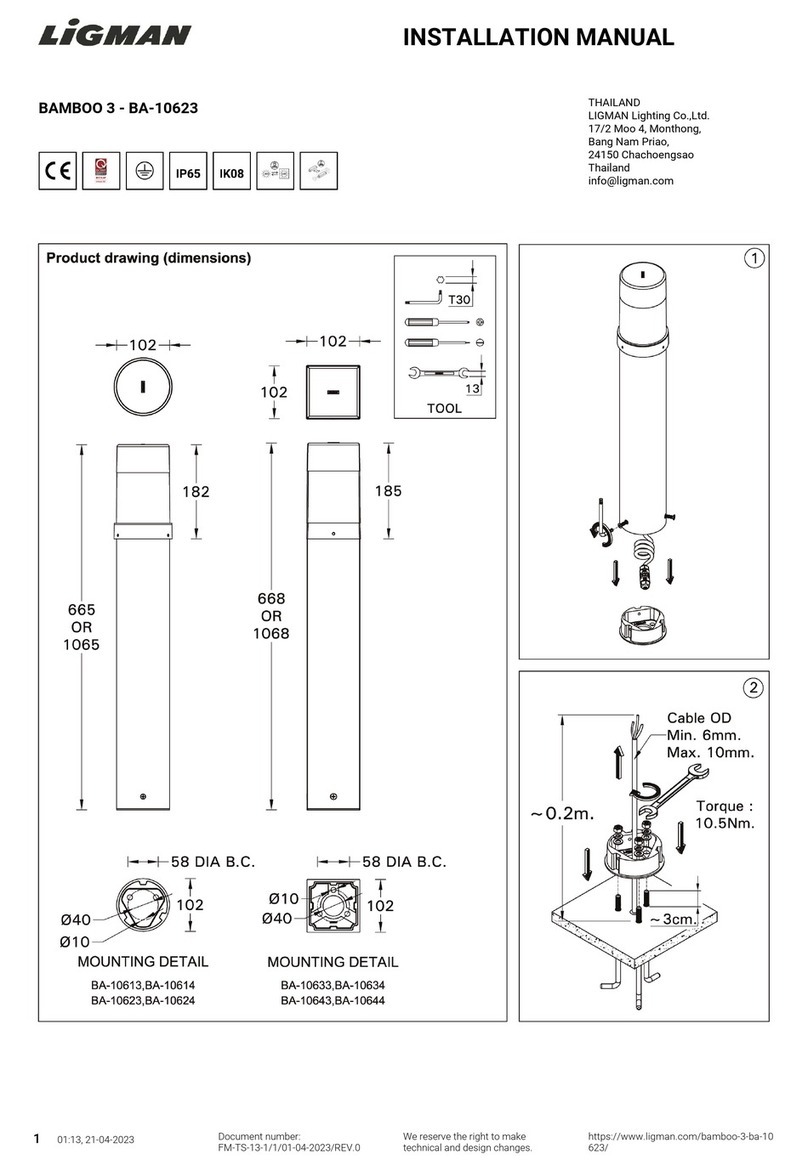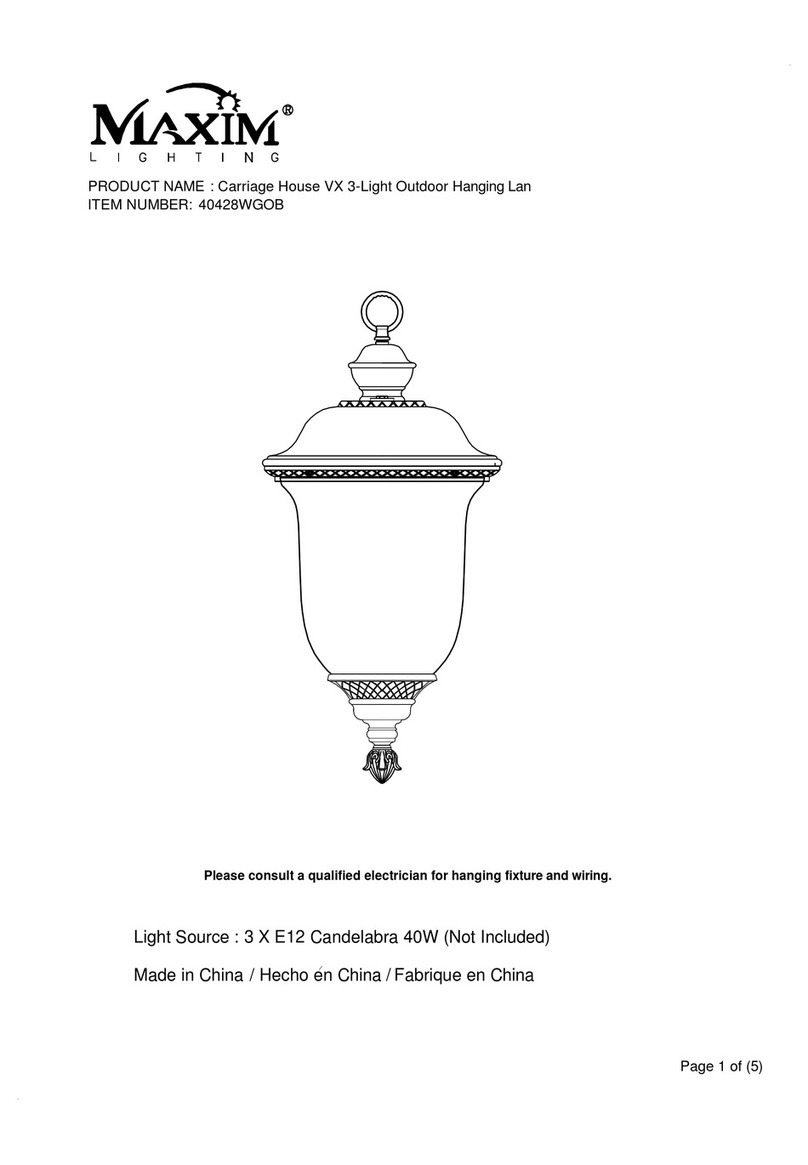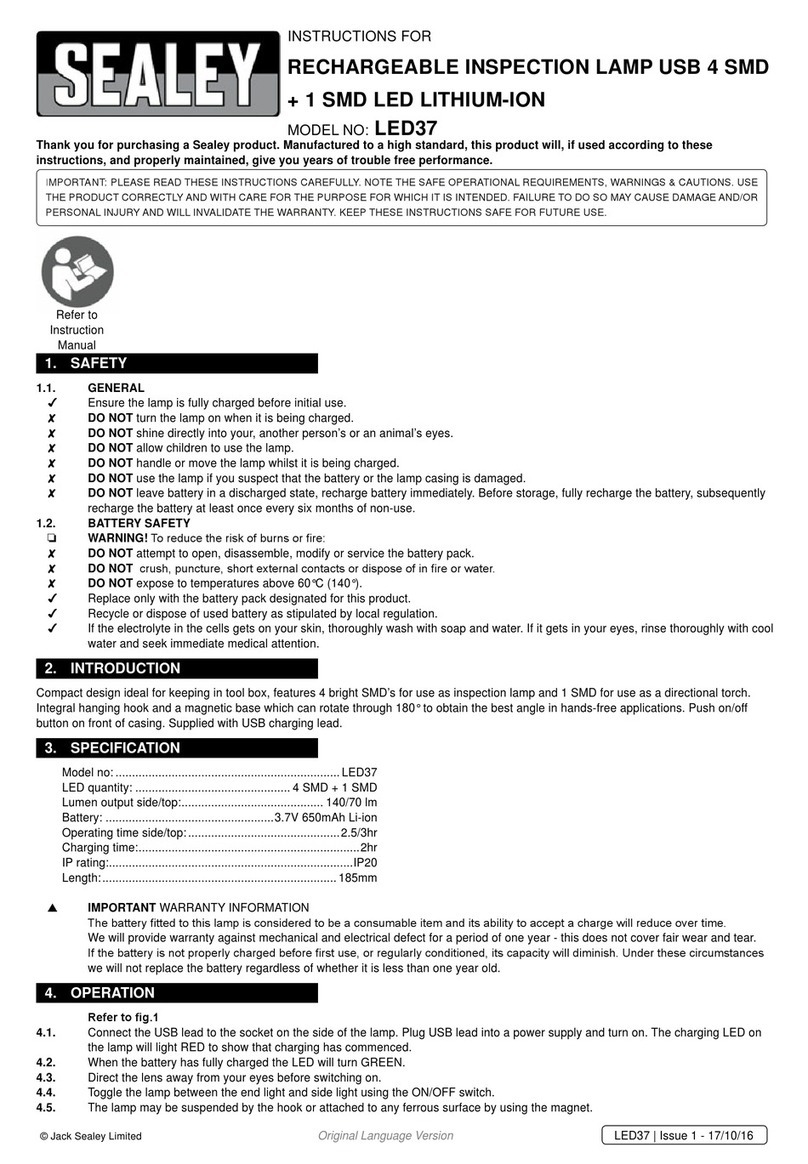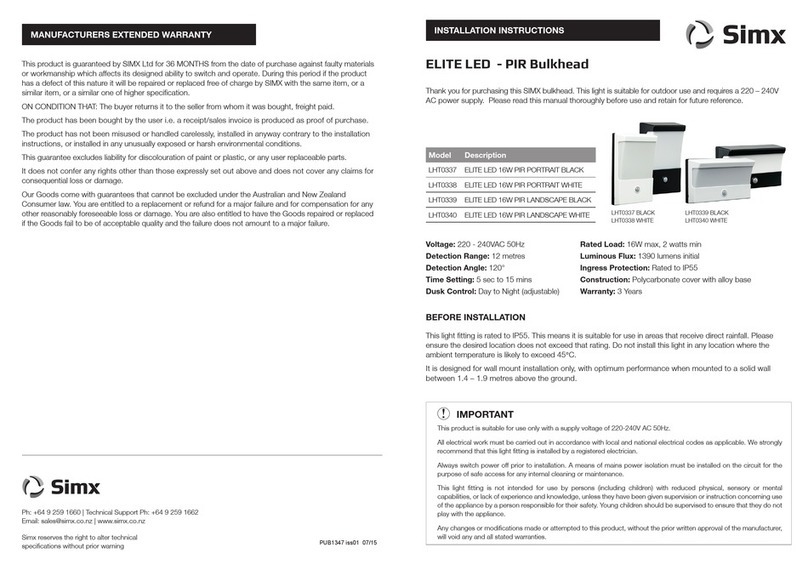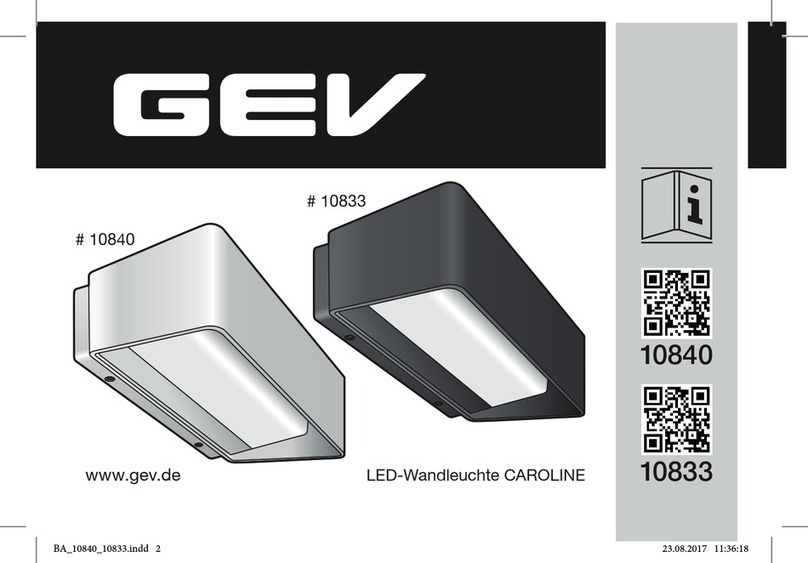
SOLAR ULTRA BRIGHT PIR LIGHT
ASSEMBLY AND OPERATING INSTRUCTIONS
These instructions are for your safety. Please read through them thoroughly
before use and retain for future reference.
COMPONENTS
• 2 x screws
• 2 x wall plugs
HOW YOUR SOLAR MOTION SENSOR LIGHT OPERATES
During the day, the solar charge panel included with this solar LED PIR light
converts sunlight into electricity, recharging the batteries. Using this stored energy,
the LED lights turn on automatically at night, when motion is detected.
The light works with a built-in PIR (Passive Infrared) sensing device, which is
continuously scanning for a heat source moving in its detection scope. Once a heat
source (such as a human or a car) is detected in that area, the light switches on
immediately, and automatically, to illuminate your pathways, steps, patios, porches or
anywhere you select for safety, convenience and security. The light remains on while
the moving heat source stays in the detecting scope.
• Motion activated
• White LED stays on for 30 seconds
CHOOSING A LOCATION FOR YOUR SOLAR MOTION LIGHT
For optimum sun exposure and longer light
output, place the solar panel in a position
that receives at least 8 hours of direct
sunlight per day. Placing the solar panel in
a shaded location will not allow the
batteries to fully charge, and will reduce
the operating hours of the light. When
choosing a location for your solar
motion sensored light, ensure that the solar
panel is not placed near night time light
sources, such as a porch light or street light.
Ideally, for maximum detection range, the
light should be mounted 2.5 metres above
the area to be scanned. This light is ideal for
areas where electricity is not available,
including driveways, carports, garages and
entrance doors, for added safety and
security around your home. When deciding
where to mount the light, keep in mind that
the motion sensor that activates this light,
has a field of vision of 90~120° (horizontal)
at a maximum distance of 4-6 metres.
INSTALLATION TIPS
For best PIR sensor detection, we suggest you consider the following:
• To avoid unexpected triggering, the sensor should stay away from heat sources
such as barbecues, air-conditioners, other outside lighting, moving cars
and flue vents.
• To avoid unexpected triggering, please keep the sensor away from strong
electromagnetic disturbance sources.
• Do not aim the sensor at reflective surfaces, such as smooth white walls, swimming
pools, etc.
• The PIR sensors detection range (about 4-6 metres at 90~120° round) may vary
slightly depending on the mounting height and location. The detection range may
also alter with environment temperature changes.
• Before selecting a place to install, please note that the sensor is more sensitive to
movement across the scan area, than to movement directly toward or away from
the sensor. If a heat source moves directly towards or away from the sensor and
not across, the detection range will be relatively reduced.
FIRST TIME USE
Ensure the power switch of your sensor light is in the “ON” position. In this position,
the solar panel will charge the batteries without activating the light. Leave the switch
“ON” for up to 8 hours while the solar panel is placed in direct sunlight. This will ensure
that the batteries in your solar-powered motion sensor light have a full charge prior to
normal operation. The PIR motion sensor will also only activate the LED during night
time hours.
MAINTENANCE
To keep your solar-powered motion sensor light looking new, keep the lens free of
dust and deposits by wiping occasionally with a dry cloth, or with warm soapy water,
if necessary.
Most importantly, ensure that the solar panel is kept free of dirt and debris at all times.
A dirty solar panel will not allow the batteries to fully charge, which will shorten the life
of the batteries and may cause the light to malfunction.
BATTERY REPLACEMENT
The battery should typically be replaced annually, or when
the charging ability decreases.
To replace the battery, remove the locking screw and open
the box (see 'STEP 1'). After taking out the old battery,
insert a new Li-ion 3.7V type 18650 / 1200mAh rechargeable
battery (see 'STEP 2').
The discarded battery should be disposed of safely.
Please recycle where facilities exist. Check with your local
authority or retailer for recycling advice.
TROUBLESHOOTING
STEP 1
STEP 2
PROBLEM POSSIBLE SOLUTIONS
Light will not switch on when
there is movement in the
detection range
• Ensure that the power switch on the main body has been turned to the “ON” position.
• Ensure that the motion sensor has been positioned to face oncoming movement.
• Ensure that the battery has been fully charged in direct sunlight for 3 sunny days.
• Check to see that the solar cell charge panel is facing south, so that it receives direct
sunlight for most of the day, enabling the battery to fully charge.
• Check to see that the solar panel is not near night time light sources, such as
street lights.
Light switches on during
the day
• Ensure the spotlight is not placed under a shady area.
• Ensure the solar panel is not facing towards direct sunlight.
Light switches on for no
apparent reason
• Moving trees, trac, pets or birds may be in the detection range. This may
be unavoidable; however, the sensor could be redirected to a height where this is
less likely to occur.
• If there are reflective objects in the detection range, such as windows, water, or white
walls, you may need to redirect or possibly reposition the motion sensor.
• Test the motion sensor by covering it completely with cardboard and waiting several
minutes to make sure it does not detect motion.
Light quickly flashes on
and o
• Battery charge may be low. Turn the power switch to the "OFF" position and charge
the battery for 4 sunny days, ensuring the solar cell charge panel has been placed in
direct sunlight.
Light is not as bright
as normal
• Battery charge may be low. Turn the power switch to the "OFF" position and charge
the battery for 4 sunny days, ensuring the solar cell charge panel has been placed in
direct sunlight.
HHGL Limited, MK9 1BA; HHGL (ROI) Limited, D02 X576




